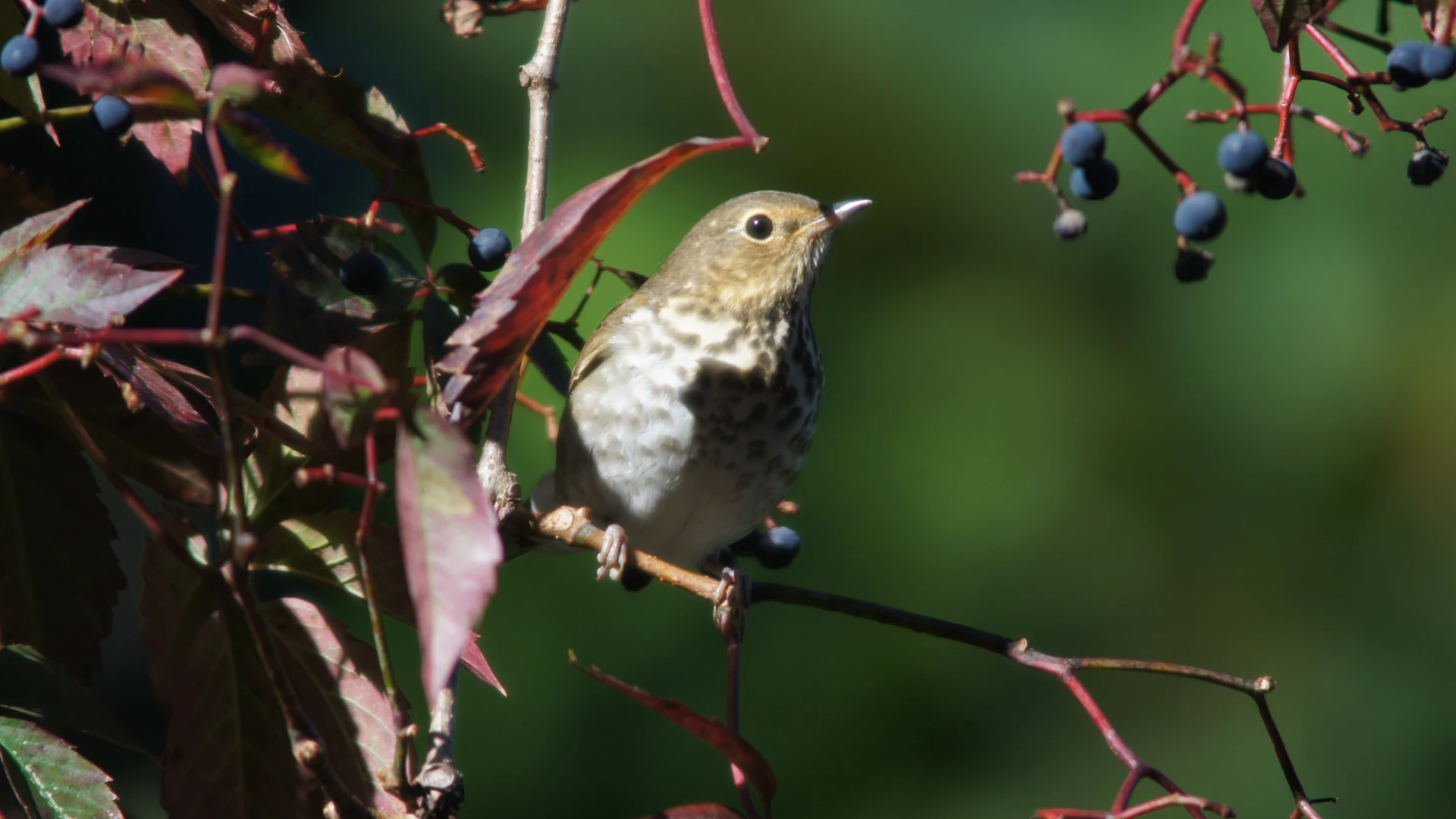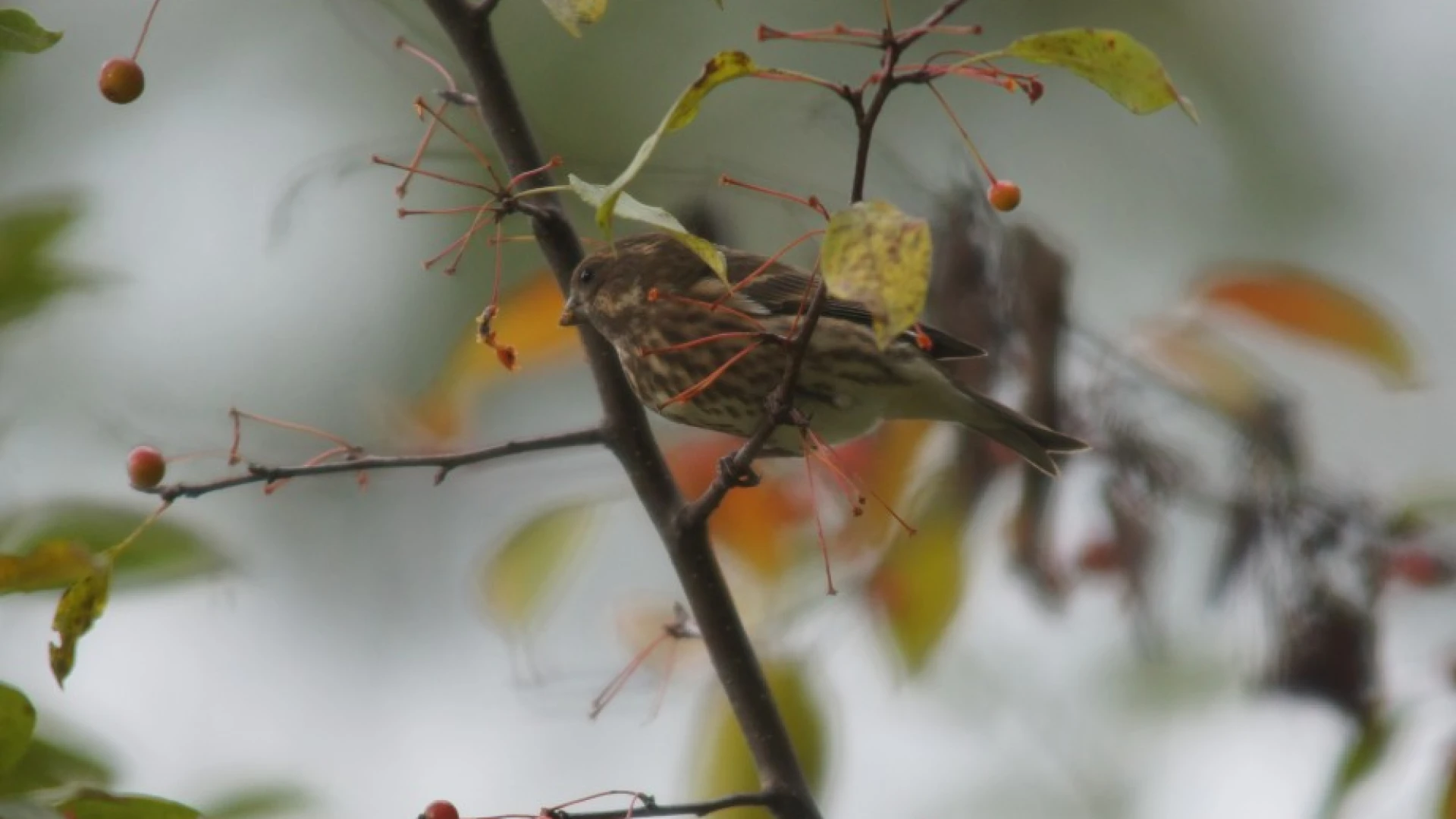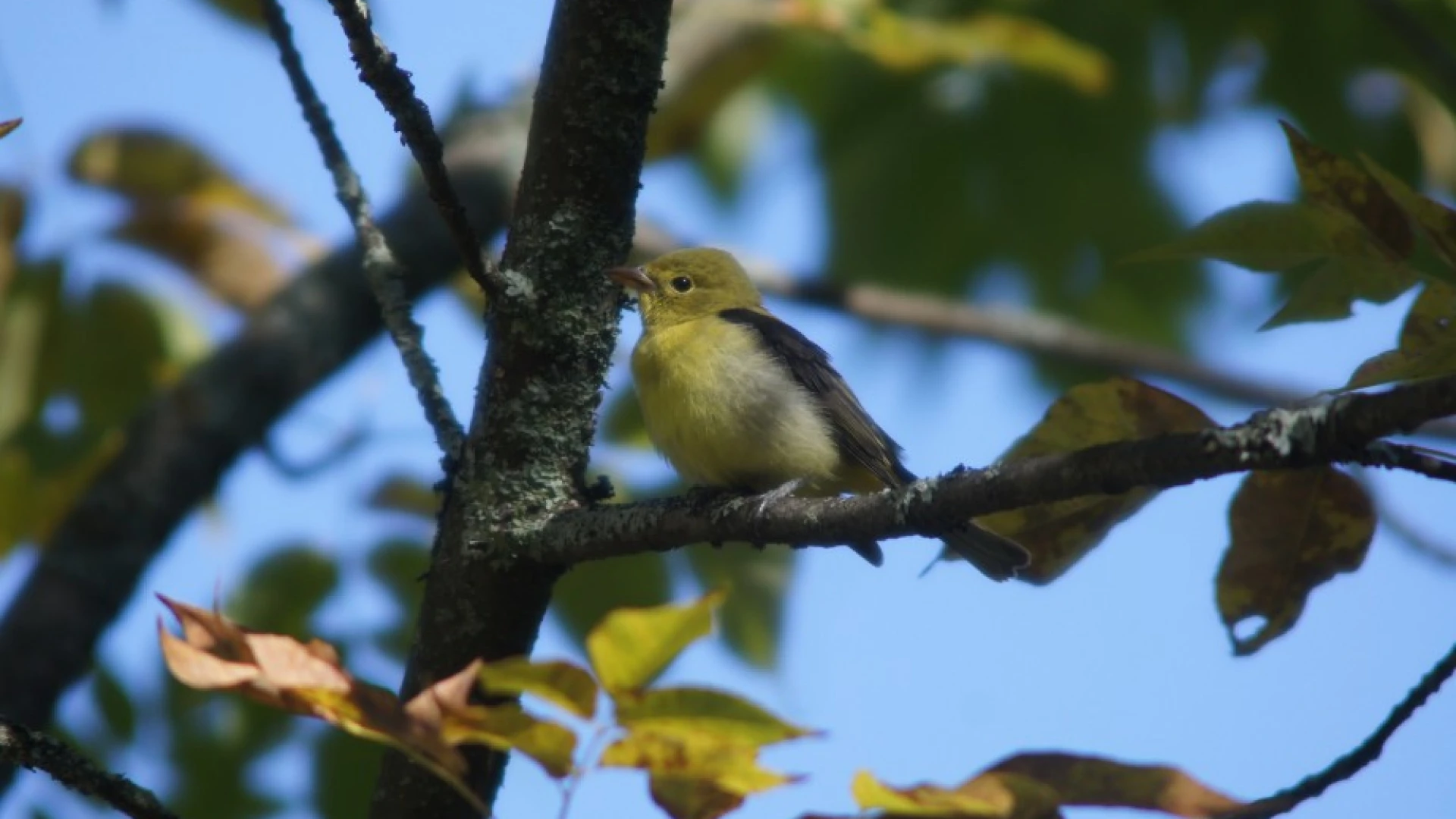
As fall bird migration has progressed, much to my mixed excitement (its fun to see birds moving through in groups) and consternation (they're leaving), our yard and our neighbor's yard have become a cafeteria for birds on the move. And while I and my neighbor have put out seed which attracts birds like white-throated sparrows, dark-eyed juncos, and American goldfinches, the draw to less common species moving through the area are the fruiting trees and shrubs.
The fifty cent term for eating fruit is frugivory, an activity which I too enjoy. And while there are some species of wildlife, particularly in the tropics, which eat fruit almost exclusively, many species eat it seasonally or opportunistically as it becomes available.
This year was not a good year for many fruiting shrubs and plants across the Adirondacks. Dry years like this year usually mean poor fruit production. Our raspberries yielded almost no fruit. I found few blackberries. And when I went blueberry picking in mid-late summer, I found many berries that looked like shriveled, gummy raisins on the plants. In fact, berry production has been poor to the point that I've heard people express concern that black bears, which rely heavily on berries in late summer and early fall, are not getting the sustenance they need in order to fatten up for a long winter. Unfortunately, hungry, desperate bears can become problem bears if they become desperate enough to look for food around human habitation.

But the fruit trees around our house haven't lured any bears out the nearby woods. What they have enticed into our neighborhood is a variety of bird species. Like many fruiting shrubs, the dogwoods along our driveway produced very few fruits this year – and what they did is already gone. The honeysuckle – a non-native shrub – is also barren. But my neighbor's ornamental cherry and crabapple have lots of fruits, and the Virginia creeper (doesn't that sound like a Scooby-Doo villain?) across the street is loaded. Creepers are native vines related to grapes and produce blue-black berries.
Many species of birds turn to fruit in fall migration because it is so readily available in late summer and fall. Fruit is also easy energy that converts quickly to fat – something all migrants need in order to successfully complete their long flight to the southeast U.S. or to the tropics.
The most common bird feeding on the fruit are American robins, and their activity undoubtedly attracts other species. This includes common species like blue jays, white-throated sparrows, and purple finches. The woodpeckers are also in on the act as I've seen both hairy woodpeckers and yellow-bellied sapsuckers supplementing their diet with fruit. And then there are the less common migrants that only show up in my yard for this.
For about two weeks running, I've had anywhere from three to six Swainson's thrushes feeding in and around the yard each day. The individuals change – as birds tank up on berries and then head south and are in turn replaced by newly arriving individuals from the north. Swainson's thrushes sport bold, buffy spectacles around their eyes, and breed in a variety of habitats in the Adirondacks, but only show up in my yard during migration.

There were also a few rose-breasted grosbeaks which graced us for about a week – although it's been a few days since I've seen one. The scarlet tanagers have been more consistent. There has been one or two rotating through the area each day for the past two weeks. Both red-eyed and blue-headed vireos, as well as a variety of warblers, have also been consistently present, eating fruit, catching insects, and attracted to the yard by the general commotion of the fruit-loving menagerie.
The birds are feeding much of the day, but activity is highest first thing in the morning. And so as I cut my own fruit for my oatmeal each day I'm constantly looking out my window to monitor what is going on. It can sometimes make my breakfast take a long time if I'm consistently distracted, and after I'm finished eating (sometimes before I'm finished), I step outside to see what the night's migration may have led to my doorstep.
But the phenomenon won't last long. The birds will soon be gone, and may well strip the trees bare of their fruit in the process. So if you have fruit trees, keep an eye open for what they might draw into your yard. And maybe you too can enjoy your fruit with breakfast, while watching hungry frugivores stocking up for their long journey south.